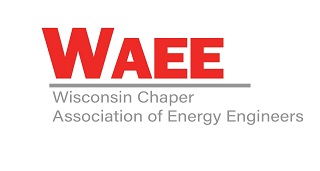
After its successful passage into law in August 2022, the Inflation Reduction Act (IRA) became the largest federal investment in clean energy and climate change in U.S. history, with approximately $369 billion being earmarked toward goals such as reducing consumer energy costs, increasing energy security and reducing greenhouse gas emissions.
Among various new grant and loan programs, the IRA introduced expansions and modifications to existing tax credits while also introducing brand new credits for technologies previously ineligible for tax credits. Many of these new programs and provisions begin to take effect in 2023, so it is important to be aware of any changes that may impact your future energy plans. Here are some of the key provisions of the IRA.
- Clean electricity production: The Investment Tax Credit (ITC), previously set to decrease in 2023, has been extended back to the full 30% credit for projects under 1 megawatt (MW). Projects over 1 MW must meet prevailing wage and apprenticeship requirements to receive the full credit. It has also been expanded to include other types of facilities, including standalone storage and biogas properties. After 2024, this program will be replaced by a new technology-neutral credit that will apply to any zero-carbon technology, called the Clean Energy Investment Credit (CEIC).
- Hydrogen production: A previously non-creditable fuel, the new Hydrogen Production Tax Credit (PTC) provides credit for facilities producing clean hydrogen.
- Renewable energy manufacturing: An additional allocation of $10 billion will extend the existing Advanced Energy Project Credit (AEPC) which provides credit for the expansion or establishment of a manufacturing facility producing solar and wind property, energy storage systems and/or carbon sequestration equipment, as well as any other qualifying advanced energy property. Additionally, a new credit was established for the manufacturing of wind or solar components, the Advanced Manufacturing Project Credit (AMPC).
- Clean vehicles: After previously expiring at the end of 2021, the Alternative Fuel Vehicle Refueling Property Credit was retroactively extended to include any charging stations placed in service during 2022. However, due to the IRA’s emphasis on environmental justice, chargers must now be located in eligible census tracts to claim the credit, including low-income communities and non-urban areas. The credit amount has also increased from $30,000 per site to $100,000 per charger. In addition, tax credits for purchasers of new consumer clean vehicles were extended while also creating new credits for used and commercial-use clean vehicles.
- Credit enhancements: The ITC can now provide extra enhancements on top of the base credit for projects meeting certain requirements. This includes projects located in energy communities, which the IRS defines as a brownfield site, an area with above-average unemployment and high direct employment within the fossil fuel industry, or a community with a retired coal mine or coal-fired power plant. Low-income communities are also eligible for their own enhancement, as well as any project satisfying domestic content standards. These enhancements are stackable, meaning projects could potentially claim all three if they meet all guidelines.
- Other provisions: Many credits, including the ITC, have new requirements to be eligible for a full credit amount. This includes meeting certain prevailing wage and apprenticeship requirements as defined by the IRS. Other credits where these requirements must be met include the Hydrogen PTC, AEPC, CEIC and the Alternative Fuel Vehicle Refueling Property Credit.
It is important to know that though the rules and guidelines are outlined by the IRS, the actual framework necessary to take advantage of funding still needs to be built, with estimates claiming it may not be fully established until February through May 2023.
At EnTech Solutions, our Grants and Incentives Team stays updated on all developments relevant to the IRA to enable our customers and partners to take advantage of these massive opportunities as we all strive toward a decarbonized and resilient future. Please contact us to learn more.
Thank you for checking out the EnTech Solutions blog. To stay up to date with technologies, developments and trends about clean energy, please subscribe.








